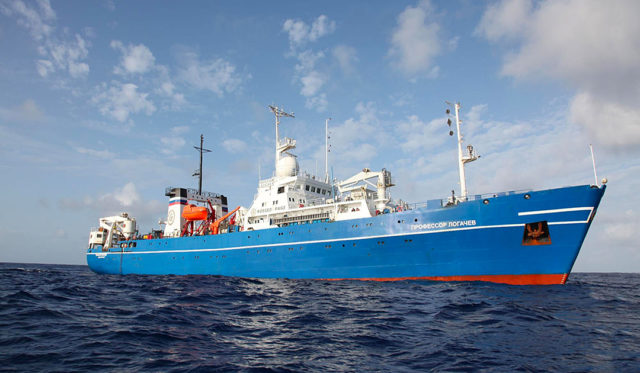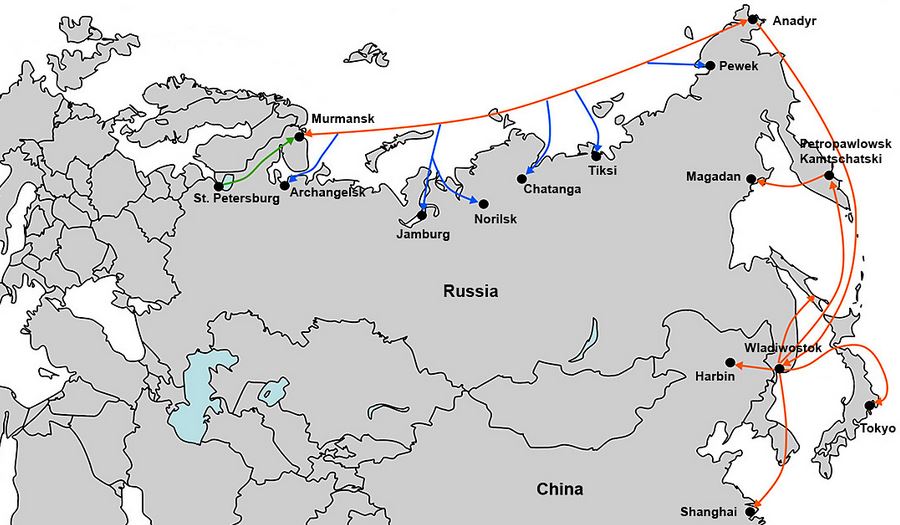
New Undersea Cables Could Become a Flashpoint in the Arctic
Publication: Eurasia Daily Monitor Volume: 18 Issue: 14
By:

Russian efforts to control the Northern Sea Route and to secure exclusive access to the local seabed, from which it hopes to pump oil and natural gas as well as mine coal and other minerals for export, have been attracting increasing attention for years (see EDM, September 3, 2019, October 20, 2020, November 9, 2020). But these issues particularly gained in prominence in recent months. First of all, global climate change has lengthened the navigation season in the north and made access to the mineral wealth there far easier. Second, those ongoing climactic shifts are making it more likely that either the United Nations will soon approve or Russia may act unilaterally to make vast claims to an economic exclusion zone in the Arctic Ocean (Newizv.ru, November 9, 2020).
Such matters will undoubtedly draw even more attention later this year, when Moscow assumes the chairmanship of the Arctic Council, the international body where the competing interests of the Arctic powers and others with an interest in the region are often thrashed out. But one aspect of Moscow’s regional policy has garnered little notice so far, even though it may soon become a flashpoint in relations among the Arctic countries: namely, Russia is backing the laying of an extensive network of fiber optic cables to service its own northern reaches and also, as one commentator claims, to promote international cooperation. For better or worse, however, such cables and related undersea electronic networks and sensor technology widely expected to accompany this initiative are likely to trigger a new round of competition between Russia, on the one hand, and the West and China, on the other.
In two new articles, Regnum commentator Vladimir Stanulevich argues that this undersea project will represent “a second Northern Sea Route, a fiber optic cable one” that will not only benefit Russians living and working along the northern reaches of the country “but interest the entire Arctic” (Regnum, December 21, 2020 and January 22, 2021). Not surprisingly, he stresses the importance of a fiber optic cable under the Arctic Ocean for Russians in the High North, pointing out that “ ‘the big three’ Russian cable operators have refused to extend a line from Novy Urengoy to Norilsk,” because there are too few potential customers, the distances are enormous and the costs high. But as regional leaders like Sakha’s Aysen Nikolayev posit, internet connectivity in the High North is critical for distance learning, media distribution, banking, and government services as well as for the promotion of the digitalization of economic activity there.
Given that Russian firms are not willing to spend the money and the Russian government does not currently have sufficient funds, Stanulevich continues, the obvious answer is to seek foreign investors. And at least in a preliminary way, they have been found with a consortium of companies (mostly from Scandinavia and Japan with one Russian member) called Arctic Connect. This corporate grouping plans to lay a 14,000-kilometer fiber optic cable along the Northeast Passage (of which the Northern Sea Route is a main part), from Finland to Japan. The project is estimated to cost $800 million to $1.2 billion and will offer data speeds of up to 200 terabytes per second, making it a key communications link between Asia and Europe. The consortium has agreed to build 11 branch lines to connect the central trunk cable with northern areas of Siberia and the Russian Far East. Those extra links are something Moscow will likely have to pay for, but compensating Arctic Connect to do this work will still cost the Russian government far less than attempting to lay any line itself across that territory, where the melting of the permafrost is making such projects vastly more difficult and expensive.

The Regnum commentator writes that this project has additional value, from Moscow’s point of view, because it breaks “the united front of the West” as far as sanctions are concerned and helps lead Finland and Japan to pursue policies “independent of the [United States] and NATO [the North Atlantic Treaty Organization] regarding Russia.” Thus, Stanulevich concludes, “this is a strong move for both technological and economic reasons and for political ones as well.” The technological, economic and political worth of this project to the Kremlin is obvious, but “there is also a military dimension,” one involving “state security and the ‘dual’ connectivity of the Arctic regions to the internet.” The latter, in particular, promises to enhance Russia’s military presence in the region and its ability to project power across northern polar waters.
It is thus “no accident” that the Russian participant in the Arctic Connect consortium, Megafon, “has strong ties with the FSB [Federal Security Service] and the Ministry of Defense of the Russian Federation,” the commentator continues. And the importance of these relationships may only grow with time as this project is completed and Russia both exploits and builds upon it. Advance Arctic Connect surveys were begun last summer; and at present, the “Fiber Optic Northern Sea Route” is set to open sometime in 2023.
Because of this presumed indirect FSB involvement, there are both short-term and longer-term security challenges for the West to consider. First, if the FSB, in fact, plays the role Moscow apparently intends, the security service will gain the capacity to monitor and read much of the data passing between Japan and Europe—an outcome that could undercut the business interests and information security of countries at both ends of that line and more broadly. And if the Arctic Connect project is successful in overcoming the enormous difficulties in laying cable in the High North, it is almost certain that Moscow, which views the defense of its northern reaches as an increasingly important part of its national security, will seek to covertly install other undersea cable systems. The latter could include sensing networks akin to the Integrated Undersea Surveillance System (IUSS—successor to the Cold War–era Sound Surveillance System, or SOSUS), which the US set up in the North Atlantic to monitor Soviet and now Russian submarine traffic. That means that the new “Fiber Optic Northern Sea Route”—if it is built and then built upon by Russia—is ultimately likely to trigger more disputes between Moscow and the West and not simply promote the development of the Russian High North.



